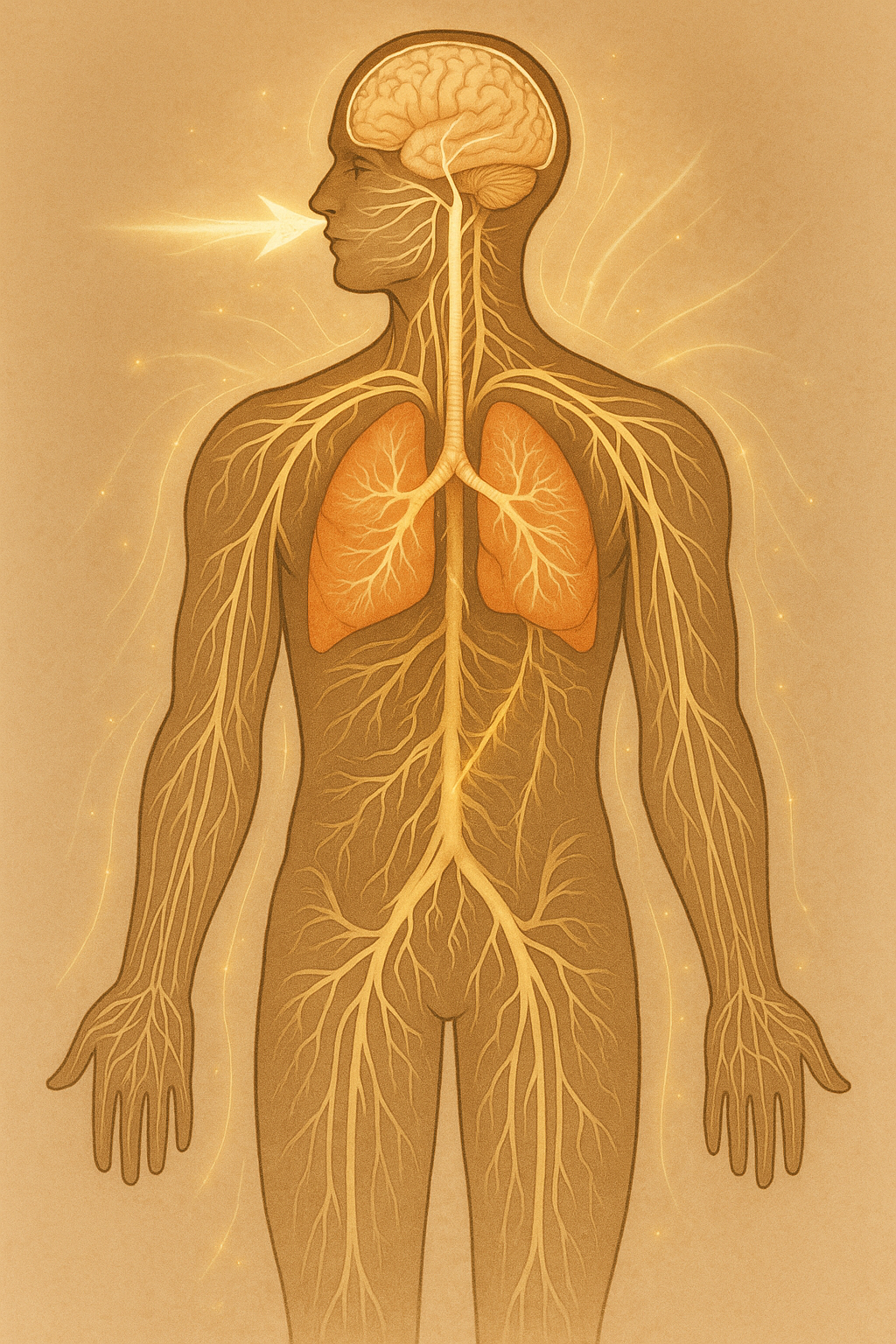Something interesting for you to quickly read 👇😁
In my work, I often talk about the autonomic nervous system, the two great branches that quietly run your life behind the scenes.
One takes you into stress, speed, vigilance, activation.
The other brings you back into safety, softness, digestion, clarity.
Most people move between these two states unconsciously.
But breathwork gives you a way to intercept the process… a way to consciously influence how you feel, how you think, and even how your inner world responds to everything happening around you.
Today, I want to take you deeper into this, much deeper, because once you understand what’s actually happening inside your nervous system and brain, breathwork stops being a “practice” and becomes a form of self-mastery.
And to do that, I want to introduce you to two remarkable researchers whose work has directly shaped how we understand breath, emotion, and regulation.
Two Researchers Who Changed the Field
Dr. Richard P. Brown, associate clinical professor of psychiatry at Columbia University, has been immersed in breath practices for more than fifty years, through martial arts, Zen, aikido, yoga, qigong, and meditation.
Dr. Patricia Gerbarg, graduate of Harvard Medical School and the Boston Psychoanalytic Society, became fascinated with the neuropsychology of breathing more than fifteen years ago.
Together, they’ve mapped how specific breathing patterns shift the autonomic nervous system, reducing sympathetic fight-or-flight and increasing parasympathetic rest-and-digest.
Their work became a bridge between ancient practices and modern neuroscience.
But another piece of the puzzle emerged through the research of Dr. Stephen Porges, the neuroanatomist behind Polyvagal Theory, a model showing the evolutionary layers of our autonomic system and how each layer deals with safety, danger, and life’s demands.
Here’s where it gets really interesting.
Your Vagus Nerves: The Superhighways of Emotion, Safety and State
Most of the parasympathetic pathways run through two large nerves: the vagus nerves, one on each side of your body.
20% of those pathways carry signals down to your organs.
But 80%, this shocks most people, send signals up from your body to your brain.
Every millisecond, millions of sensory messages tell your brain what’s happening inside you.
Your perception of these internal signals is called interoception, and it has a massive impact on your emotions, thoughts, and behaviors.
Dr. Brown and Dr. Gerbarg applied this understanding to breathwork and discovered something important:
With every inhale and exhale, millions of microscopic stretch receptors in your lungs fire, sending streams of information up the vagus nerve to the brain.
When you change your breathing pattern, you change those messages.
When you change those messages, you change how your brain organises your emotional and mental state.
Where Does All This Information Go?
Based on years of clinical trials, electronic vagal nerve stimulation, and advanced imaging, Brown and Gerbarg showed that breath-driven signals reach the brain regions responsible for:
emotional regulation
perception
judgment
attachment
resilience
behavioural response
This aligns with the work of Dr. Porges and Dr. Sue Carter, whose research reveals that vagal activity influences your capacity to connect, trust, bond, communicate emotionally, and feel empathy.
Dr. Carter even linked vagal activity to the release of oxytocin, the hormone of love, bonding, and safety.
Which means your breath directly shapes how safe you feel and how safe others feel around you.
As Dr. Gerbarg explains:
“Breathing has such a strong impact on our thoughts and feelings that it creates a portal, a direct pathway to quiet the mind, reduce defensive overreactivity, and allow us to feel safe, close, loving, and loved.”
Let’s take it one step further.
Breathwork As A Tool for Anxiety, Trauma & Stress
Brown and Gerbarg have applied these principles in clinical settings for people with:
severe anxiety
depression
PTSD
trauma
stress-related medical conditions
inflammatory disorders
One technique they teach is Coherent Breathing, breathing gently through the nose at around 4.5–6 breaths per minute.
When practiced correctly, it synchronises respiratory rhythm with vagal tone, stabilising the nervous system and restoring balance.
Why Breath Changes Everything
Every physiological, psychological and emotional state has a breathing pattern.
When you shift one, the other shifts automatically.
Your breath affects your brain.
Your brain affects your body.
Your body affects your emotional state.
Your emotional state affects your choices.
Your choices shape your life.
This is why breathwork feels like magic when you experience it, but it’s biology, not mystery.
When you understand this deeply, breathwork becomes the steering wheel of your inner world.
And this is what I want more people to experience.
Want to Go Deeper Into This?
Every Wednesday, I guide a live session online called Midweek Mindshift, deep, transformative breathwork guided with music, intention, and integrative practice.
If you want to feel these nervous-system shifts in your body, not just read about them… join us this week.
And if you want to master these techniques in a structured way, explore my book What the Heck Is Breathwork, a practical guide to understanding and using your breath as a tool for healing, clarity, and transformation.
Your breath is the most powerful instrument you own.
Most people never learn how to use it.
You are not most people.
Hope to see you soon 🫶
Big Hug
Matt
Some studies to read more if you wish to know more 👇
https://pubmed.ncbi.nlm.nih.gov/16131297/
https://pmc.ncbi.nlm.nih.gov/articles/PMC10741869/
https://pubmed.ncbi.nlm.nih.gov/15347862/
https://www.frontiersin.org/journals/human-neuroscience/articles/10.3389/fnhum.2018.00353/full



